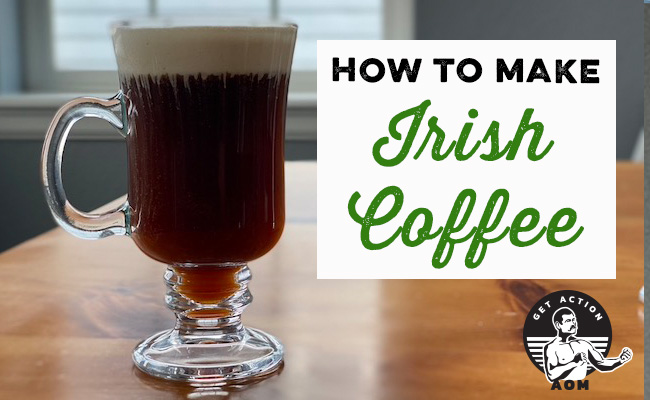
Editor’s note: This is a guest post from Suyog Mody.
I have a confession. My day doesn’t begin until I’ve had my first cup of coffee. Until that happens, I’m a zombie. The caffeine gets me going for the day. It’s not just the caffeine, though. It’s a habit, a ritual I go through every morning that gives my day direction.
Occasionally, however, I find myself waking up in a place without a coffee maker. It could be camping in the great outdoors. It could be at a friend or family member’s house who doesn’t drink coffee. It even happened in my own home last year, when my Chemex maker was knocked over and shattered.
Thankfully, coffee can still be brewed without any kind of maker or contraption. In fact, it’s surprisingly easy to make a great cup without a coffee maker.
What You Need
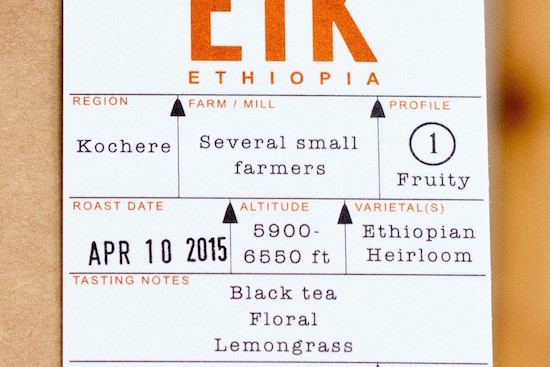
Freshly roasted coffee. Even though you don’t need a coffee maker, you’ll still need freshly roasted coffee beans. The quality of a cup of coffee is largely determined by the quality of the beans used to make it, and nothing is better than freshly roasted beans. The taste of a cup of coffee is about 80 percent aromatics, which dissipate as roasted coffee ages. If coffee sits for a long time after roasting, it can taste stale. Put another way, the freshest coffee makes the best coffee.
Of course, you also need quality beans — find a local specialty coffee roaster or look online for a specialty delivery service. You can always roast your own coffee too.
Try to use coffee that has been roasted within the past two weeks, and you’ll have a delightfully aromatic cup of fresh coffee. If you are hitting the road, pack your whole bean coffee with you — it doesn’t take much space!

Hario Mill hand grinder. The handle comes off and I usually tie it to the main frame with a rubber band when I’m traveling.
Manual coffee grinder. You’ll also need a coffee grinder, so you can grind up the beans and release all of their aromatics. The aromatics that bring out a coffee’s nuances only last for 15 to 20 minutes before they dissipate into the air. Once ground coffee has sat for longer than that, it can taste flat and one-dimensional, which is why I recommend grinding coffee immediately before brewing it.
Two manual grinders that I like are the Hario Mill and the Porlex Mini. Both are burr grinders, so they’ll produce a nice, consistent grind, and they’re relatively compact.
Hot water. You’ll still need hot water, just below boiling. Coffee should be brewed with water that is between 195 and 205°F. Within this range, water won’t scald the grounds, but it will draw out their flavors and aromatics. Water below 195°F will under-extract the coffee and it’ll start to taste sour.
Thankfully, you don’t need to check your water’s temperature with a thermometer. Who carries a thermometer around anyway? Just boil water and let it stand for 30 seconds. Any utensil with a handle can be used as a kettle to heat water.
Other items you need:
- Handkerchief to use as a filter
- Paper clips or elastic band to hold the handkerchief in place
- Large mug to brew coffee into
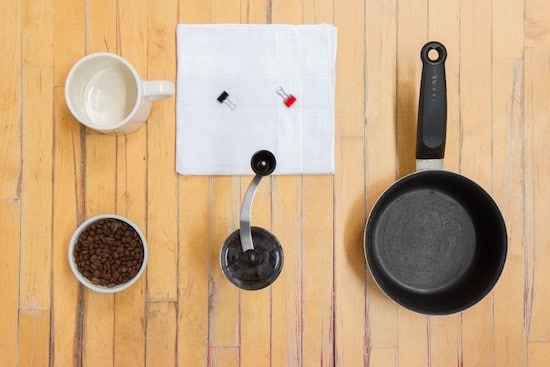
Here’s everything you need — freshly roasted coffee, a grinder, a handkerchief (and some paper clips or an elastic band to hold it together), hot water, and a large mug.
How to Brew Your Coffee

Step 1: Create a makeshift pour-over by folding a clean handkerchief into a small-ish square. We’ll use this as our filter.
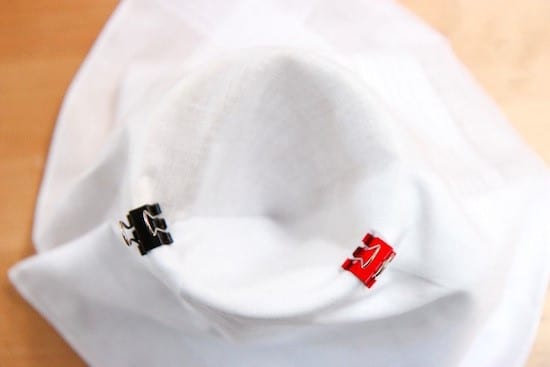
Step 2: Attach your handkerchief filter to a cup. Paper clips work best.

Step 3: Grind your coffee to a medium, sand-like grind. This is a great (and short) workout for your forearms and wrists. Pro tip: African beans are smaller and heavier than Central or South American or Asian beans. You can use fewer African beans (about 20% less) and still get the same strong cup of coffee.
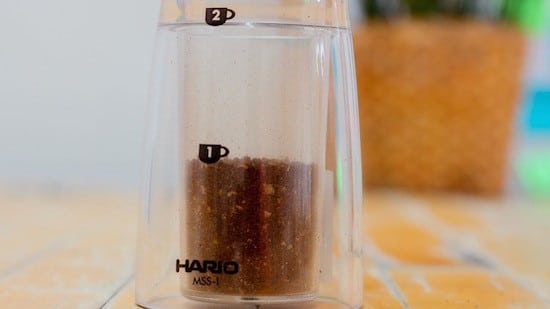
Step 4: Grind just enough coffee so that you reach the first cup symbol on the grinder. (Most modern hand grinders will have some sort of marking.)
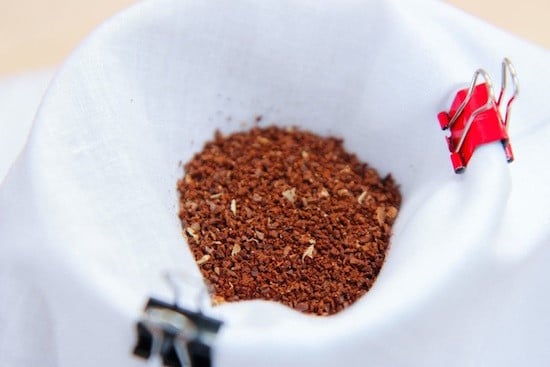
Step 5: Add the ground coffee to the center of your filter. Shake it a little to get an even surface.
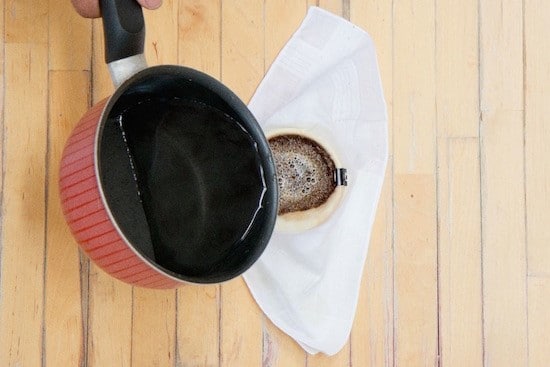
Step 6: Bring 2 cups of water to a boil. Take it off heat and let it sit for 30 seconds. Wet the grounds with a little water and wait another 30 seconds. Pour half of the remaining water over a final 30-second increment. Then add the rest of the water in four smaller pours. The full process should be about 2 minutes.
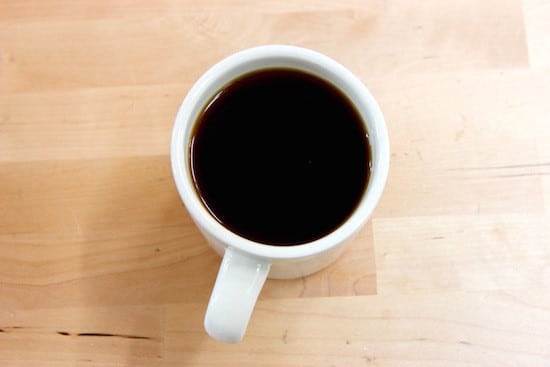
Step 7: Remove the clips and the handkerchief as soon as the water has gone through the coffee grounds. If the handkerchief is submerged, carefully but quickly remove it from the cup. And there you have it — your own great cup of coffee!
As a roaster and someone who tries a lot of different coffees, I always recommend trying at least a couple sips of black coffee to understand what it tastes like. Then add cream and sugar as necessary to get your perfect cup.
Pro tip: If you think it tastes too bitter, add more coffee next time. If it’s too sour, reduce the amount of coffee you use.
Finally, cleaning: Cleaning is simple — throw away the coffee grounds. Rinse the handkerchief (without soap if you are using it the next day) or throw it in the wash. This one will smell great every time you use it!
The next time you wake up and no coffee maker is available, don’t worry. It doesn’t have to be a difficult morning. People brewed great coffee for centuries before coffee makers were commonplace, and it’s easy to do. Just follow the above steps, and you’ll have a good, coffee-filled morning.
_______________



